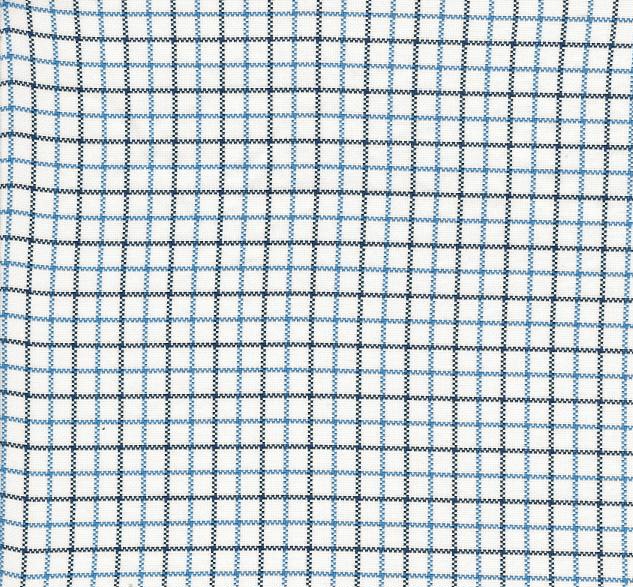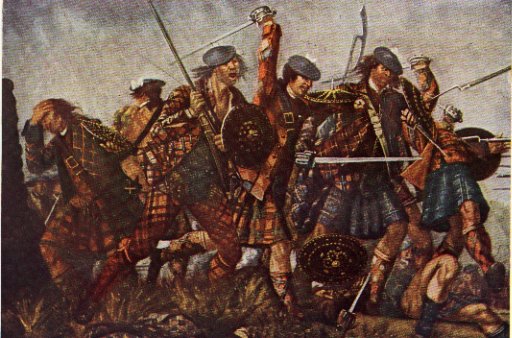Why do I say I will have plaid things and not tartan? Budget, mostly. While all tartans are plaids, not all plaids are tartans. As I mentioned in my Princess Merida post, the term "plaid" originally referred to a large piece of woven fabric (like a blanket) that could be worn in several ways by men and women--its most famous use, as a "belted plaid," evolved into what we now know as a kilt. For the purpose of this post, though, when I use the word plaid I mean the pattern of interlocking stripes common in the modern vernacular.
According to Wikipedia (somewhere every history teacher I've ever had is shuddering at this citation), the term plaid (to describe a pattern) can refer to:
Gingham,
 |
| Gingham |
 |
| Tattersall |
 |
| Madras |
 |
| John Drummond, 4th titular Duke of Perth, 1714-1747. Jacobite. 1739, via Scottish National Gallery |
 |
| detail of the Jacobite forces from the painting An Incident in the Rebellion of 1745 by David Morier, 1746 |
| sett for the Baillie (William Wilson) tartan, as recorded in the 1819 Key Pattern Book |
| recorded in the 1819 KPB as "No.2/64 or Aberc." and named for Sir Abercrombie in the early 19th c. |
Sort of. Whether or not someone has gone through the registration process and paid the fee, the Register has specifications for what makes a plaid a tartan. According to the website:
The basis of any tartan is a simple two-colour check to which the designer adds over-checks, bands and stripes in contrasting colours. These should be arranged to result in a balanced and harmonious pattern.
Where two stripes of the same colour cross, a block of solid colour is formed. Where different colours cross, the two colours are mixed in equal proportions to create a new colour. Ideally, neither colour should 'swamp' the other. The two together should make a new intermediate shade.
A tartan pattern is a geometric design, made up of blocks of solid colour which join on the diagonal, radiating across the fabric like spokes, and with each block of colour surrounded by blocks of mixed colours. The blocks form a pattern, reflected or repeated many times across both the warp and weft of the cloth.
The total number of colours in a tartan (including mixtures) increases rapidly as the number of colours increases: two colours make a total of three colours including mixtures; six base colours make a total of twenty-one including mixtures. The more colours that are used therefore, the more complicated the pattern becomes.
Traditionally a maximum of six colours were used in tartan - and many professional designers still stick to this limit to avoid over-complicating the design.
So there you have it. Beginning in about the 1820s and reaching its height during the mid 19th century, the concept of a clan tartan (or a tartan associated with other specific things) became quite popular. Today you can search the Scottish Registry of Tartans website to see clan tartans, and many others--did you know that many US states have tartans? While created in 2003 and therefore a pattern I could never actually use (unless I have a limitless budget and can custom order a mini-kilt), I quite like the Massachusetts "Bay State" tartan.
Part of the reason I am so interested in tartan as a fashion trend in the 19th century is that there is so much history associated with it. When I look at fashion plates from various periods with plaid dresses, I want to know what tartans they might have used--even if I will probably have to settle for something in the right color family that is easily available.
While this post brushed over a lot of important aspects of tartan, hopefully it will be a helpful reference as I continue posting! If you'd like to learn more, here are a few sites I recommend:
http://www.scottishtartans.co.uk/index.htm
http://www.tartanregister.gov.uk/
http://www.scottishtartans.org/index.html


Excellent work. Have you seen the film Culloden? It does an excellent job of explaining just how miserable life around 1745 was for the Scots. The movie goes into the whole outlawing the Tartan issue.
ReplyDelete